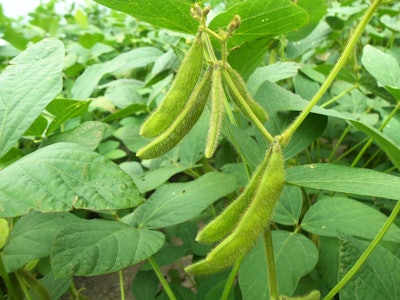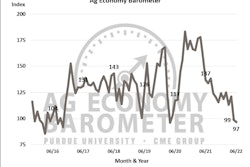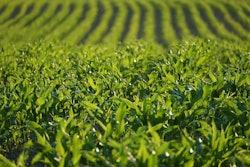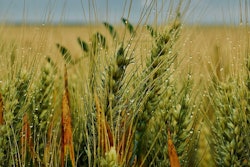
While the market expected a decrease in planted acres across the U.S. due to a wet planting season, the U.S. Department of Agriculture surprised the market, slashing soybean acres by 2.7 million acres.
Regardless, farmers are still pegged to produce a record U.S. soy crop, weather permitting, says the U.S. Soybean Export Council (USSEC).
USDA's June 30 Grain Stocks and Planted Acreage reports put U.S. soy acres at 88.3 million acres (35.7 million hectares) and showing record export demand for U.S. soy during March through May.
“As global supplies of soy are tight, the world is watching U.S. Soy production,” said Jim Sutter, CEO USSEC. “Now is the time to look carefully and critically at the global environment, what your customers expect and what you expect.
“Russia’s war on Ukraine, the aftermath of COVID, spiking inflation, and supply chain disruptions all remind us of our shared responsibility to work together. U.S. Soy farmers are maximizing production of nutritious, sustainable U.S. Soy so that our customers and their customers’ families around the world can reliably and readily access nutritious, safe, and affordable food every day.”
Many states saw increase in planted soybean acres
Mac Marshall, vice president of Market Intelligence for USSEC and the United Soybean Board, noted that traders were looking for a reduction from the March plantings report, but not of this magnitude.
While many states saw increases in planted soybean acres, North Dakota saw the biggest change with the March figure revised down by 1.1 million acres (0.4 million hectares), bringing it to 5.9 million acres (2.4 million hectares).
Wet conditions in North Dakota have made it very difficult to get acres planted, explained Marty Ruikka, president of The ProExporter Network.
Even though USDA slashed soybean acres from 91 million acres (36.8 million hectares) in its March report to 88.3 million acres (35.7 million hectares), it’s still the highest soybean area planted since 2018, said Marshall.
“If we assume a trend yield of 51.5 bushels/acre (3.46 MT/hectare), the reduction in planted area implies a drop in production of about 130 million bushels (3.5 MMT),” he said. “However, the crop size would still be a record at 4.5 billion bushels (122.5 MMT).”
Resiliency of soy trade flows
Carlos Salinas, USSEC Regional Director for the Americas, said he has been surprised by the resiliency of the trade flows of U.S. soy to customers in Latin America in the context of high prices.
For the week ending June 16, USDA reports accumulated exports of soybeans already shipped at 5.3 MMT to the region, compared to 5.1 MMT during the same time last year.
Outstanding sales for U.S. soybeans (commitments that are on the books and yet to be executed this week) are at 1.3 MMT, compared to 900,000 MT during this same time last year.
Salinas said when you look at crush in destination markets, the Americas region has also benefitted from expanding margins.
“It’s understandable that crushers want to have stocks on position; they want to buy ahead,” he said, adding that they are very well positioned logistically to execute and lock in those crush margins.
Salinas explains the region is mostly a soybean meal market and accumulated exports for soybean meal in the region are at 5.6 MMT for soybean meal exports, compared to 5.4 MMT this time last year.
Country highlights include:
- Colombia’s accumulated exports are at 1.1 MMT, compared to 850,000 this same time last year.
- Ecuador shows significant growth at 591,600 MT, compared to 498,000 MT this time last year.
- Venezuela up at 210,300 MT, compared to 173,100 MT during this time last year.
Furthermore, there are 1.8 MMT in open commitments for soybean meal.
“I believe the industry realizes the importance of supply chains,” Salinas said. “While the market is inverted, buyers want to ensure they are logistically positioned and have the supply needed to feed their animals. It’s a good reaction to see, but it tells you we are a very inelastic market.

















